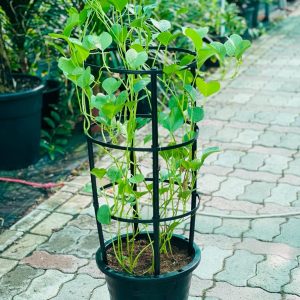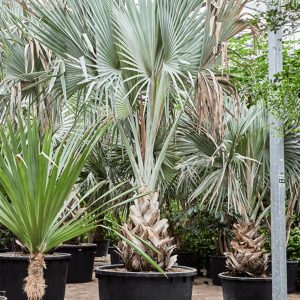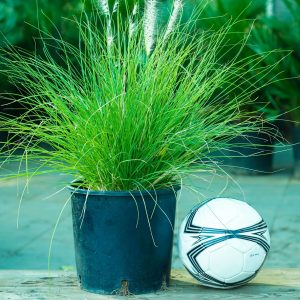Size : 1.20M
The banana tree, also known as the plantain tree, is a tall, tropical plant that belongs to the Musa genus. It is primarily cultivated for its fruit, which is commonly consumed worldwide. Here is a detailed description of the banana tree, along with some care tips:
Appearance:
The banana tree is characterized by its large, paddle-shaped leaves that grow in a spiral pattern around a central stalk, forming a canopy-like structure. The leaves are typically green and have prominent veins. The tree can grow quite tall, reaching heights of up to 20 feet or more, depending on the variety and growing conditions. The trunk of the banana tree is sturdy and composed of tightly overlapping layers of leaf sheaths. In favorable conditions, the tree may produce clusters of small, pale-yellow flowers that give way to green, curved fruits that mature into edible bananas.
Care Tips:
Sunlight:
Banana trees thrive in full sun to partial shade. Provide them with at least six hours of direct sunlight each day for optimal growth and fruit production.
Soil:
Plant the banana tree in well-draining soil that is rich in organic matter. The soil should retain moisture without becoming waterlogged.
Watering:
Keep the soil consistently moist but not waterlogged. Water the tree deeply and regularly, especially during hot and dry periods. Avoid overwatering, as it can lead to root rot.
Fertilization:
Banana trees are heavy feeders and benefit from regular fertilization. Apply a balanced, slow-release fertilizer or organic compost around the base of the tree every two to three months during the growing season.
Pruning:
Remove dead or damaged leaves as needed. Prune away any suckers or offshoots that emerge from the base of the tree to control its growth and focus energy on fruit production.
Protection:
Provide wind protection for the Banana tree (Plantain tree), as strong winds can damage the large leaves. If growing in colder climates, protect the tree from frost or freezing temperatures, as it is sensitive to cold.
Harvesting:
Depending on the banana variety, the fruits can be harvested when they are green and mature. Cut the entire bunch of bananas from the tree and allow them to ripen off the tree in a cool, dark place.
Pests and Diseases:
Monitor the Banana tree (Plantain tree) for pests like aphids, mealybugs, and banana weevils. Treat infestations promptly using organic or chemical insecticides. Watch for diseases such as Panama disease or bacterial wilt, which can affect banana trees. Remove and destroy infected plants to prevent the spread of disease.
With proper care and favorable growing conditions, the banana tree (plantain tree) can thrive and provide a tropical touch to your garden while yielding delicious and nutritious fruit.








Reviews
There are no reviews yet.